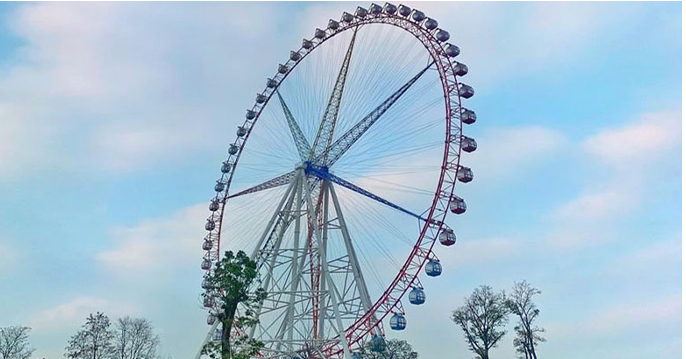- Albanian
- Arabic
- Belarusian
- Bengali
- Czech
- English
- French
- German
- Hebrew
- Hungarian
- Indonesian
- irish
- Italian
- Japanese
- kazakh
- Persian
- Russian
- Thai
- Uzbek
- Vietnamese
roller coaster track design
The Art and Science of Roller Coaster Track Design
Roller coasters have long been a staple of amusement parks, captivating thrill-seekers with their combination of speed, height, and gravity-defying maneuvers. Behind every exhilarating ride lies a complex science and art — the design of the roller coaster track. This intricate process involves physics, engineering, and a deep understanding of what makes a ride thrilling, all while ensuring the safety of its passengers.
The Fundamentals of Track Design
At its core, roller coaster track design is primarily about creating a sequence of movements that provide an exciting experience. The basic elements include hills, loops, corkscrews, and drops, each meticulously crafted to optimize thrill while adhering to safety regulations. Engineers utilize principles of physics such as gravity, momentum, and centripetal force to calculate the optimal heights and angles for each element of the track.
The height of the initial drop is arguably the most critical aspect of a roller coaster's design. The larger the drop, the more potential energy is converted into kinetic energy, resulting in increased speed. Designers carefully calculate this initial descent to elicit the strongest adrenaline rush possible, while ensuring the ride remains controllable and safe for riders.
Material and Structural Considerations
The choice of materials is another essential component of roller coaster track design. Traditionally, wood was the primary material used for roller coasters, offering a classic aesthetic and a different riding experience due to its natural flexibility. However, modern coasters are predominantly constructed from steel, allowing for more dynamic designs and smoother rides. Steel tracks can support tighter turns, higher loops, and steeper drops, enabling designers to push the limits of what is possible.
Additionally, the structural integrity of the track must be rigorously analyzed. Engineers use computer simulations and wind tunnel tests to ensure that the design can withstand the forces exerted during operation. The stresses experienced by the track due to acceleration, deceleration, and the weight of the trains are assessed to prevent failures that could jeopardize rider safety.
The Influence of Rider Experience
roller coaster track design

Beyond physics and material science, roller coaster track design must consider rider experience. The pacing of the ride, curves, and transitions all play significant roles in how thrilling the ride feels. Designers often aim to create a balance between intense moments and relaxing stretches of track, allowing riders to experience varying levels of excitement throughout the ride.
For example, sharp turns can induce a sense of G-forces that make riders feel pinned to their seats. Conversely, gentle hills can provide a moment of weightlessness that’s equally exhilarating. The careful placement of these elements is what transforms a simple track into an unforgettable adventure.
The Integration of Technology
As technology advances, so too does roller coaster design. Computer-Aided Design (CAD) software allows engineers to create intricate layouts and simulate rides before construction. Virtual reality simulations enable designers to experience the ride from a passenger’s perspective, making necessary adjustments to enhance the experience.
Moreover, modern roller coasters incorporate sophisticated control systems that manage speed and safety. Magnetic braking systems, for instance, can slow down trains smoothly without the need for traditional brakes, providing a gentler stop while maintaining safety standards.
The Future of Roller Coaster Design
Looking ahead, the future of roller coaster track design is bright. Innovations such as virtual reality experiences integrated into the ride, themed narratives, and even the potential for “smart” coasters that adapt to rider preferences could redefine what a thrilling experience means. As designers continue to experiment with new materials and technologies, the possibilities for roller coaster design are virtually limitless.
In conclusion, roller coaster track design is a harmonious blend of art, science, and technology. It requires a comprehensive understanding of physics, materials, engineering principles, and an acute awareness of rider psychology. As new technologies emerge and design philosophies evolve, the future promises even more thrilling adventures for those brave enough to ride the newest roller coasters. What remains at the heart of this intricate process is the same the pursuit of creating unforgettable experiences that bring joy and exhilaration to millions around the world.
-
Flume Ride-Hebei Zhipao Amusement Equipment Manufacturing Co., Ltd.|Thrilling Water Attraction&Customizable DesignJul.30,2025
-
Flume Ride - Hebei Zhipao Amusement Equipment | Water Coaster, Thrilling DescentJul.30,2025
-
Flume Ride - Hebei Zhipao | Thrilling Water AttractionJul.30,2025
-
Flume Ride: Thrilling Water Attraction by Hebei Zhipao|Log Flume Manufacturers&Flume Ride DesignJul.30,2025
-
Flume Ride-Hebei Zhipao Amusement Equipment Manufacturing Co., Ltd.|Thrilling Water Coaster, Safe DesignJul.30,2025
-
Flume Ride-Hebei Zhipao Amusement Equipment Manufacturing Co., Ltd.|Thrilling Water Attraction, Safe DesignJul.30,2025
